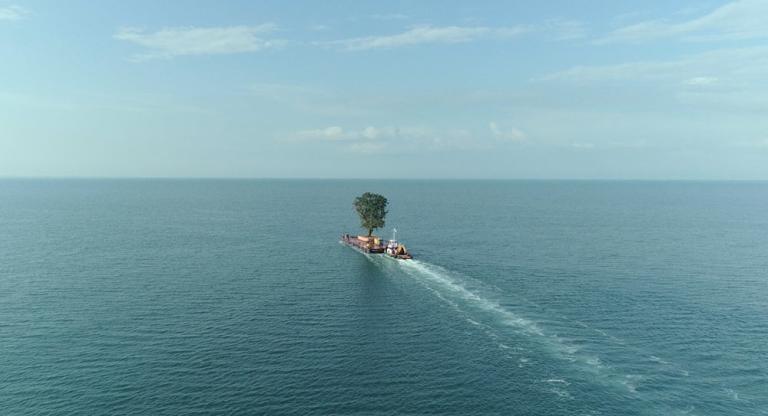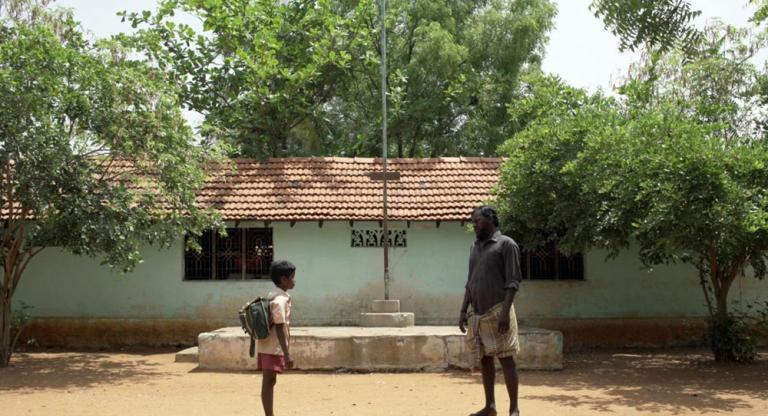In her 2018 documentary The Seer and the Unseen, Sara Dosa alternates between images of bucolic Icelandic countryside and the visual blight of construction vehicles. A woman leads small children around mossy boulders and points out small creatures and buildings they themselves cannot see. A group of people link arms in protest, apparently to an audience of none; the camera pulls back and a news crew is documenting the action for the rest of the nation to view. Everything we see has a bigger story beyond the frame, perhaps beyond the realm of sight.
Ragnhildur Jónsdóttir, or Ragga, is an environmentalist and grandmother, whom the filmmaker follows over two years as she and her fellow activists protest the construction of a new road across a pristine lava field. To most of those in opposition, the road represents gratuitous development and ecological devastation in the interest of capital. Ragga is concerned that the bulldozers would also destroy the homes of the elves, who are caretakers of nature and with whom she communicates. As a “seer,” she acts as a liaison between the inhabitants of modern Iceland and the mystical, unseen world of huldufólk (hidden people)—elves, trolls, and other creatures—found in traditional Icelandic folklore. Ragga may have a whimsical view of things, but she’s not entirely alone in her beliefs; we see her called upon by businesses and developers to consult with the elves and learn where they can and cannot build. It may be more superstition than true conviction, but it’s clear that the country’s folklore is still felt among its people.
The bankruptcy Iceland faced after a deregulated influx of foreign capital in the aughts and the subsequent crash was the result of speculative investment. At one point, Ragga quips, “Where actually is that money that drove the rise and fall? I think it’s more invisible than the elf world. I hardly ever see money, but I see a lot of elves!” Dosa understands Ragga’s story and mission as one of environmental conservation; even though she is fighting on behalf of the elves, she is also fighting for the natural world (and against capitalist greed). The film does not endorse Ragga’s belief in elves, but it grants her respect. And Ragga, while taking her gift seriously, does not impose it on anyone else, even as she advocates on behalf of the creatures that humans cannot see. She instead asks politely that people attempt to look at the natural world around them with the innocence of their inner child. In this way, perhaps we can identify the invisible forces that shape our planet, whether they be elves or unregulated markets.
The Seer and the Unseen screens this evening, November 7, at the Museum of the Moving Image, following a screening of Sara Dosa’s first film, The Last Season. Both are part of the ongoing series “New Adventures in Nonfiction.” The filmmaker will be in attendance.





